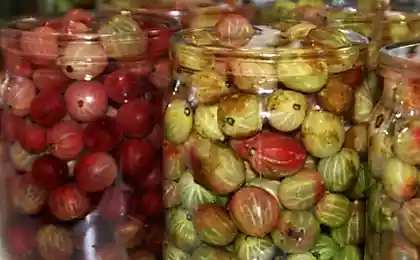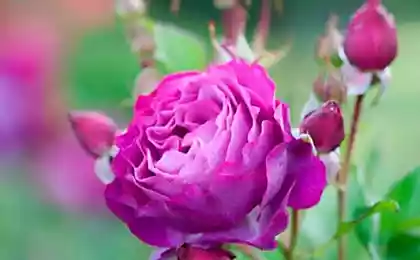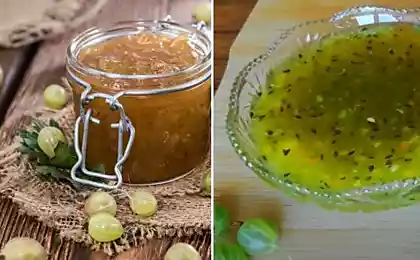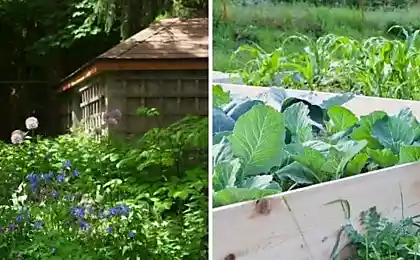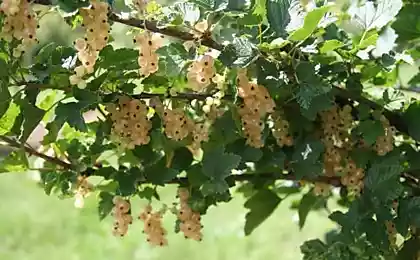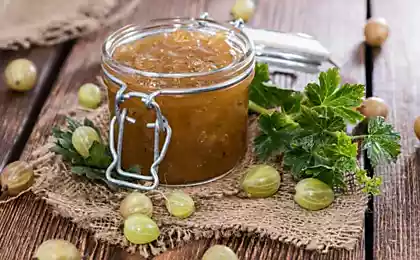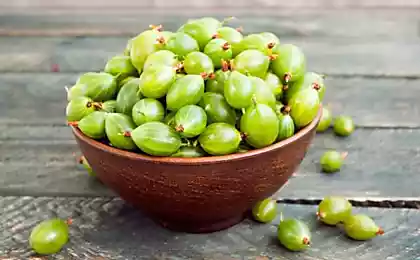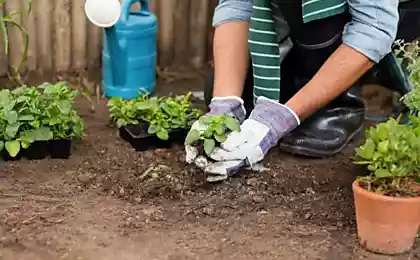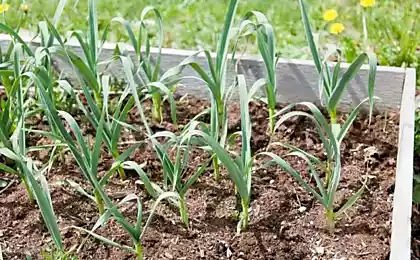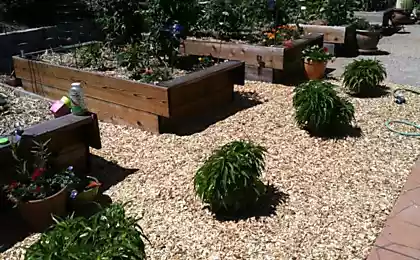137
How to feed gooseberry bushes in spring and why cut them off
Gooseberry berries are nutritious and extremely useful for the body. And they are happy to eat not only directly from the bush, but also in the form of jams or jam. Even a gooseberry compote turns out wonderful.
And today's edition. "Site" will tell How to properly prune the gooseberry in the spring and what to feed, so that the bushes of the plant will soon give an excellent harvest. There will certainly not be too many such beautiful berries.
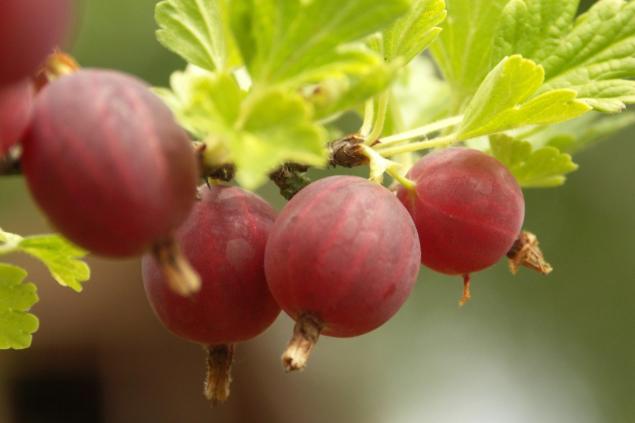
Pruning gooseberry bushes in spring and summer give many new shoots, which quickly turns the bush into prickly thickets. This has to be corrected manually, otherwise the plant will turn into an interweaving of thorny twigs, the berries will become smaller, diseases and pests will appear.
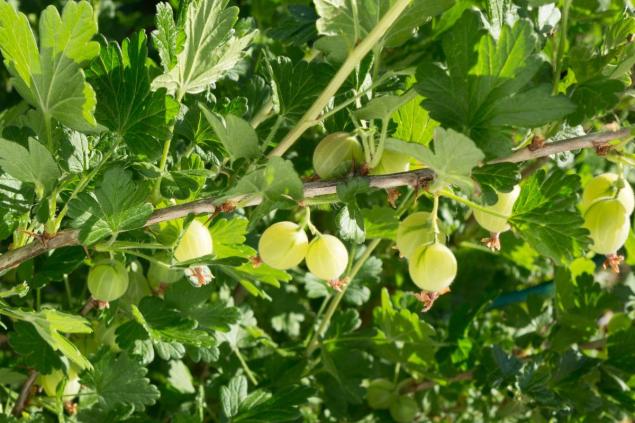
Pruning is also needed to get rid of damaged, old and dry branches. The purpose of the procedure is to leave on the bush and new twigs, and active, which give a crop not the first year.
The first pruning should begin immediately after the snow melts. And you need to have time to the moment when an active life begins in the shoots, before the buds bloom. If the work is started late, then you need to act very carefully.
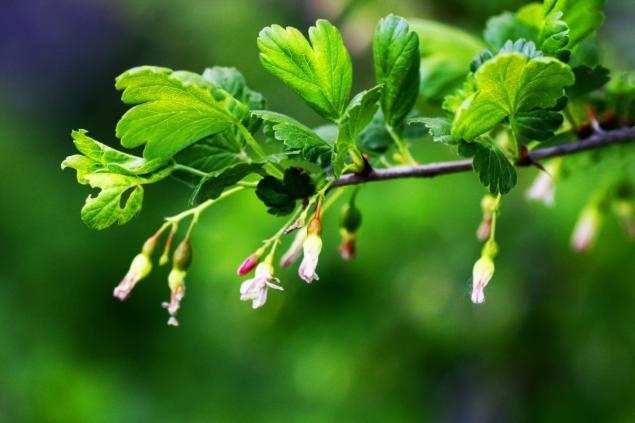
You need to remember that the bush is thorny, and therefore you can not do without tight gloves. You should also stock up on a sharp cutter, or even better a cutter, because it has long handles, which helps to penetrate any part of the bush. Although the cutter is inconvenient to cope with cutting young shoots.
First of all, you need to remove all dried and damaged branches, as well as those affected by powdery dew. You should get rid of old twigs that are more than 5 years old. By the way, the old branch is characterized by a thick and coarse bark, dark brown (almost black) color, an abundance of shoots on the sides.
510973
After that, you can take up the removal of shoots that make the bush too thick, do not allow it to ventilate normally and shade each other. To do this, remove the extra and weakest shoots. Do not forget to leave a couple of young shoots (thickness from 0.5 cm), which in the future will replace the old.
You should also get rid of the lower branches that touch the ground. Under the weight of the berries, they will be located even lower, which will increase the chances of fungal diseases. But if the branches are good, then you can arrange supports.
It is not necessary to completely remove the branches, because they can simply be shortened. For example, shortening young shoots by a couple of centimeters helps them branch better. And removing competing branches, you need to prune closer to the site of branching to give more chances left branch.
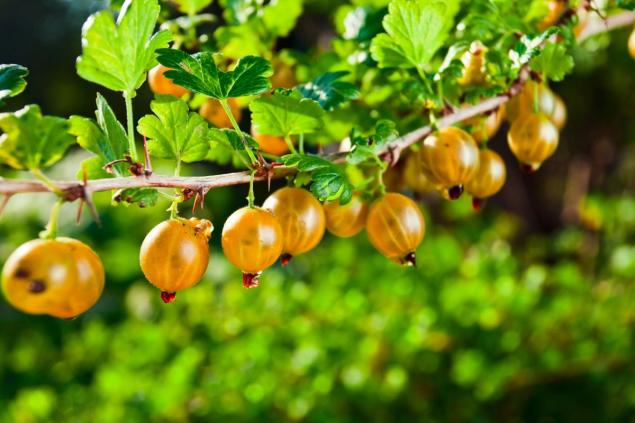
In order for adult bushes to develop safely and please the harvest, they need to eat well. In the spring, once every two years, humus or compost should be laid. For a greater effect, ammonium sulfate, superphosphate, potassium sulfate are added.
Liquid fertilizers should be combined with watering. And the liquid is poured not under the bush, but into a hole, which is dug along the contour of the bush itself. First you need to pour water, then fertilizer, then water again.
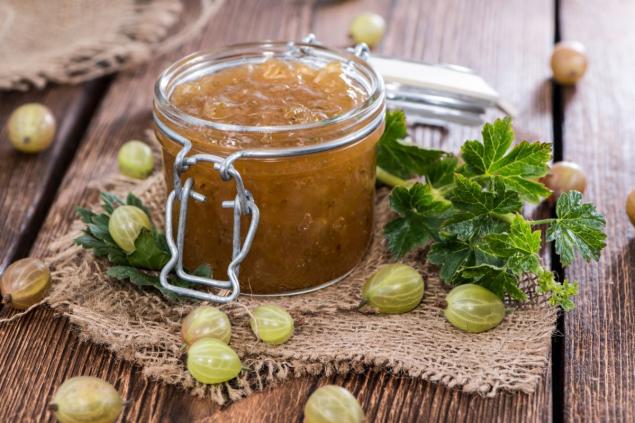
Right gooseberry pruning And the right fertilizers will greatly increase the chances of a good harvest. And although you will have to work hard, but for the sake of a delicious and useful gooseberry, time is not a pity. The main thing is to wait for your favorite berries to fully ripen, and not to tear them even green.
And today's edition. "Site" will tell How to properly prune the gooseberry in the spring and what to feed, so that the bushes of the plant will soon give an excellent harvest. There will certainly not be too many such beautiful berries.

Pruning gooseberry bushes in spring and summer give many new shoots, which quickly turns the bush into prickly thickets. This has to be corrected manually, otherwise the plant will turn into an interweaving of thorny twigs, the berries will become smaller, diseases and pests will appear.

Pruning is also needed to get rid of damaged, old and dry branches. The purpose of the procedure is to leave on the bush and new twigs, and active, which give a crop not the first year.
The first pruning should begin immediately after the snow melts. And you need to have time to the moment when an active life begins in the shoots, before the buds bloom. If the work is started late, then you need to act very carefully.

You need to remember that the bush is thorny, and therefore you can not do without tight gloves. You should also stock up on a sharp cutter, or even better a cutter, because it has long handles, which helps to penetrate any part of the bush. Although the cutter is inconvenient to cope with cutting young shoots.
First of all, you need to remove all dried and damaged branches, as well as those affected by powdery dew. You should get rid of old twigs that are more than 5 years old. By the way, the old branch is characterized by a thick and coarse bark, dark brown (almost black) color, an abundance of shoots on the sides.
510973
After that, you can take up the removal of shoots that make the bush too thick, do not allow it to ventilate normally and shade each other. To do this, remove the extra and weakest shoots. Do not forget to leave a couple of young shoots (thickness from 0.5 cm), which in the future will replace the old.
You should also get rid of the lower branches that touch the ground. Under the weight of the berries, they will be located even lower, which will increase the chances of fungal diseases. But if the branches are good, then you can arrange supports.
It is not necessary to completely remove the branches, because they can simply be shortened. For example, shortening young shoots by a couple of centimeters helps them branch better. And removing competing branches, you need to prune closer to the site of branching to give more chances left branch.

In order for adult bushes to develop safely and please the harvest, they need to eat well. In the spring, once every two years, humus or compost should be laid. For a greater effect, ammonium sulfate, superphosphate, potassium sulfate are added.
Liquid fertilizers should be combined with watering. And the liquid is poured not under the bush, but into a hole, which is dug along the contour of the bush itself. First you need to pour water, then fertilizer, then water again.

Right gooseberry pruning And the right fertilizers will greatly increase the chances of a good harvest. And although you will have to work hard, but for the sake of a delicious and useful gooseberry, time is not a pity. The main thing is to wait for your favorite berries to fully ripen, and not to tear them even green.
